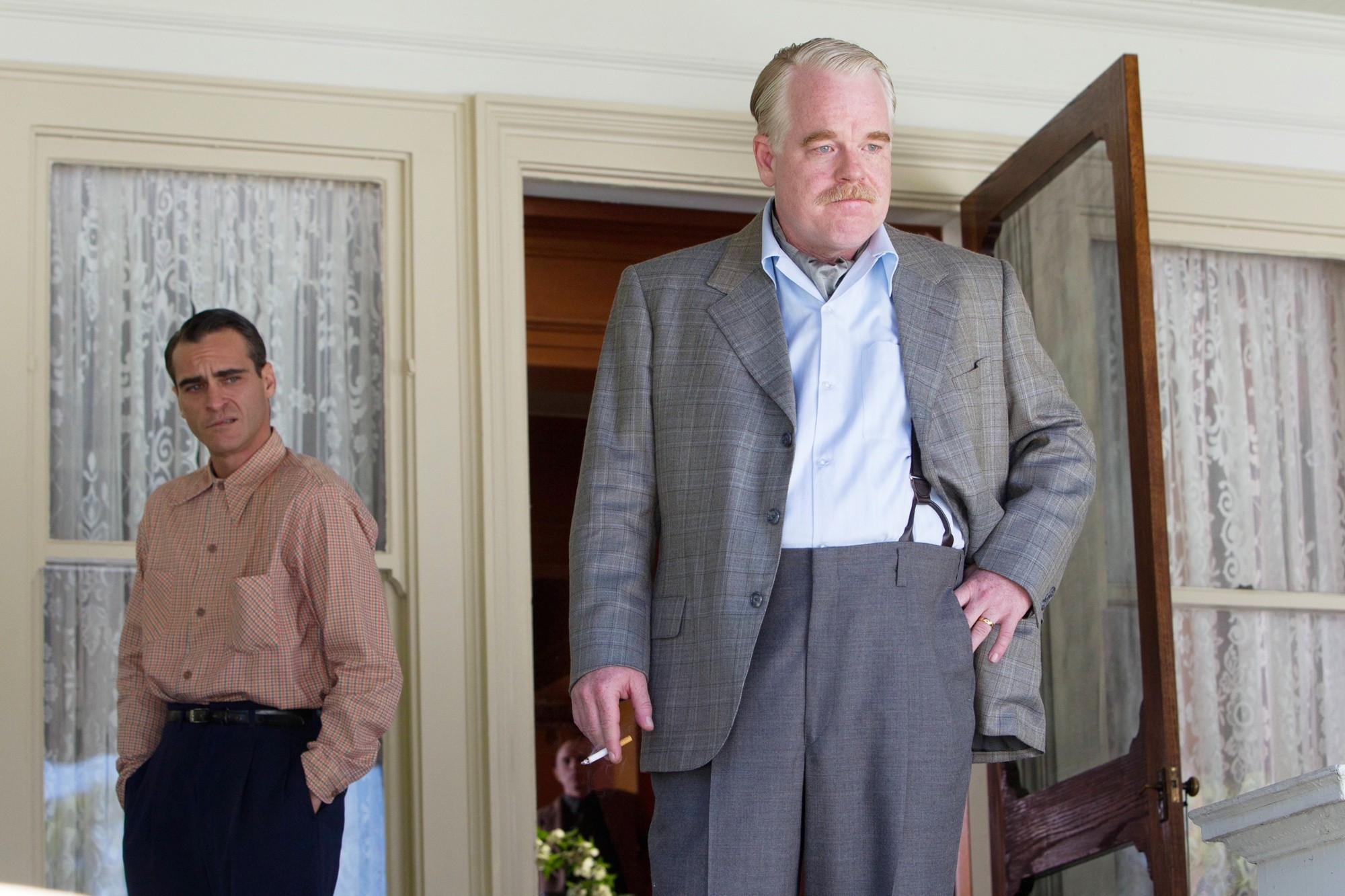Paul Thomas Andersen is one of a handful of studio darlings whose films win big at both the box office and the awards circuit. Assuming dual roles of writer and director, Andersen is among an even smaller group that can weave a seductive story with absolute, creative precision. This control, when combined with Andersen’s uncanny sensitivity to nuance in virtually every aspect of filmmaking, allows him to craft films that combine the cerebral and the visceral. With The Master, Andersen artfully spins a web of subtle hints and cryptic allusions around a story which draws his viewers in with visceral intensity.
The Master begins with Freddie Quell (Joaquin Phoenix), a PTSD-riddled Navy veteran returning from WWII. After equivocating his way out of the psychiatric hospital, Quell begins his new as life as a department store photographer, while mixing viciously potent cocktails out of whatever chemicals he finds in the darkroom. Thanks to Quell’s instability, however, he quickly loses his job, and drifts aimlessly until he chances upon a ship, which he sneaks aboard, and passes out. Upon waking, he meets the larger-than-life cult leader Lancaster Dodd (Philip Seymour Hoffman), who immediately warms to Quell and offers him work.
The remainder of the film centres on the relationship between Dodd and Quell. The two men are, in many ways, ideal counterbalances. Quell, who Phoenix masterfully portrays with a jittery volatility, is a man buffeted about by the winds of his passions: his interest in women extends only so far as his lust; when upset, his spindly frame lashes out with volcanic fury. Hoffman, who shared Venice’s Best Actor award with Phoenix, plays Dodd with grandiose aplomb. Hoffman imposes his large frame on each scene, dominating all, save his wife (Amy Adams), with a combination of confidence and psychological insight. If Quell is the primal id, Dodd is the superego—slowly and forcefully repressing any animalistic notions in his followers with sheer mental strength. These two forces clash and grind, attempting to bend each to the other’s will. Whether it’s subjugation to our own nature or another’s will, Andersen skillfully uses the men to show that we are never really free—not even when we are the ones subduing others.
Like Andersen’s previous works, The Master is no less an exercise in cinematography than in storytelling. Mihai Malaimare Jr.’s camerawork invariably finds beautiful compositions in every shot; from Phoenix warily gazing from beneath a combat helmet, to him drinking moonshine below the decks of a Navy ship, one is struck by a pervading sense of visual weight and proportion. The lighting (which many directors woefully relegate to differentiating between night and day) is equally important to Andersen, who deftly employs the contrast between light and dark to underscore a character’s nature, or drastically increase a scene’s intensity.
The film’s symbolic elements are, perhaps, its most enjoyable aspect. The process of examining seemingly trivial remarks is, in itself, an exercise to be relished—Andersen is too meticulous a filmmaker to leave things to chance. It is rare for a film to approach its topics so adroitly, with such light strokes, as to abstain from walloping the viewer over the head with the point (I’m looking at you, Black Swan).
Good films are almost never a one-off encounter. The first watch tends to be too captivating to appreciate the details of its composition; it’s only on the second viewing that one can begin to appreciate the more delicate nuances. With The Master, Andersen offers a beautifully complex story crafted with rare skill—plan on watching this one again.
The Master opens in theatres on September 28.








